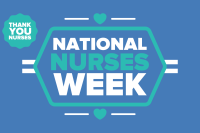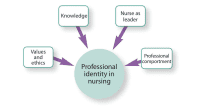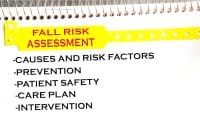For the past decade, care innovation has exploded with new tools and technology. Keeping up with all of the new devices and gadgets available to ease caregiver burden and increase safety is hard. One machine that’s gaining a lot of attention and investment lately is the robotic nurse, also known as the nursebot.
What’s fueling the rapid development of automated caregivers? I believe it’s the result of three major trends: growth of an aging population, advances in technology and information systems, and never-ending nursing shortages.
As nurses, we’re used to seeing robots filling and delivering medications in pharmacies, assisting in the operating room, and supporting telehealth strategy. But can robots deliver nursing care? Yes, according to several experts and current research.
Social urgency: the aging population
Today, people live longer and have fewer children than past generations, creating a larger elderly population relative to a shrinking labor force. The Department of Health and Human Services Administration on Aging estimates that by 2030, the 65-and-older population in the United States will reach 72 million, compared to 46.2 million in 2014.
New technology for caregiving
In Japan, where nearly 30% of the population is over 65, its birth rate is low, and not enough people are entering the workforce to care for the elderly, a proposed solution includes robotic nurses. Japan has several versions of robotic nurses that can perform simple tasks, like taking vital signs and moving patients.
In the United States, Duke University’s School of Engineering and School of Nursing have collaborated to create the Tele-Robotic Intelligent Nursing Assistant (TRINA). Nurses and physicians remotely navigate this robot without entering a patient’s room. TRINA can transport linens, take vital signs, and deliver food and medications. Since the Ebola outbreaks, robots and other technologies are being tested to diminish risks for providers who care for patients with infectious diseases.
Researchers from the University of Michigan, University of Pittsburgh, and Carnegie Mellon University are working on a nursebot called Pearl. This assistive robot reminds patients about routine activities such as taking medications and guides them through their environment as needed.
Ethics and decision making
With demands for caregivers growing, seeking technology solutions that fill the gap makes sense. However, a robot isn’t a substitute for the essence of our profession—assessment, critical thinking, and therapeutic high-touch skills. On the other hand, if robots can support basic patient needs and give nurses more time to do what they do best, then everyone can benefit.
Questions about robotic technology focus on ethics and decision making. For instance, can a machine be programmed with 1) a reliable set of ethics; 2) the ability to assess a clinical situation and make judgments about the correct clinical course of action; and 3) the capacity to respond appropriately to ambiguous situations? Right now, the answer is no.
Current robot prototypes are designed as nursing assistants to supplement care. It’s an important distinction, so our terminology should reflect that. Robots are care assistants and that’s the only way we should refer to them. Rest easy. There’s no substitute for the real RN.
Lillee Gelinas, MSN, RN, FAAN
Editor-in-Chief
lgelinas@healthcommedia.com


















